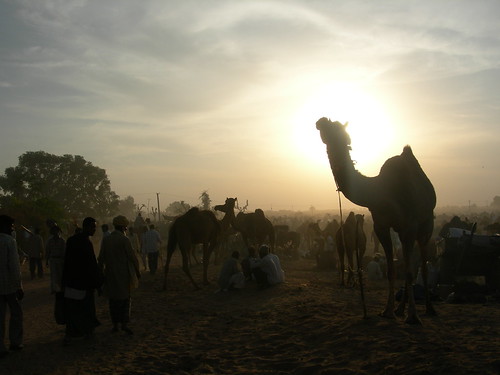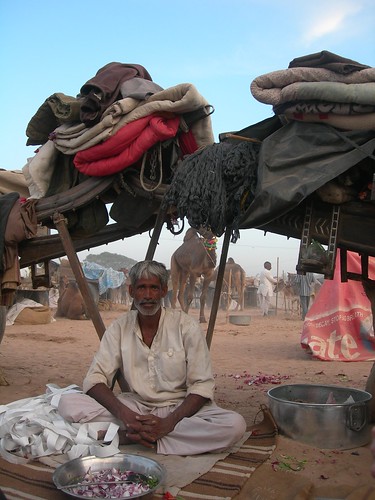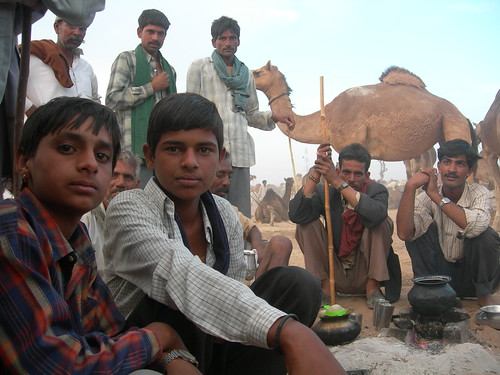Nagaur Cattle and Camel Fair

A strange and slightly overwhelming trip to Naguar broke up the last month in Jaisalmer. I almost started a small riot/mob while walking back one evening to my tent dressed in Rajasthani clothing. It was just a little too much for this crowd of Indian boys who turned from five in number to an overheated and frightening fifty. Somedays I love my orni (veil) more than anything.
Drank much tea, ate delicious samosas, oranges and kachuris, was chased around town by a lit of over excited men and children and met a particularly affectionate camel that I was very tempted to stay with...
I told all the raikas that I was so happy I had finally found a rajasthani boyfriend -- as my new kass dost nuzzled and nestled me lovingly. Oddly appreciated for a girl like me who hasn't had a hug in two months.

All in all, it was an informative and interesing trip. Certainly justified the twenty some hours I spent on public buses to reach Naguar. The naguar Mela, though not any sort of tourist event, is the largest cattle fair in Rajasthan and draws a great deal of camels as well (at least two or three thousand). It was a perfect opportunity for me to meet some Raikas (a subcaste of camel herders) from all over the state who are doing long distance migration and see how they traveled to the fair.

The Raikas are traditionally camel breeders, though some types of Raika (mostly from the Godhwar region) also raise sheep and goats. The Naguar Fair was my first real contact with these people and a large factor in me later deciding to head down to Pali upon leaving Jaisalmer to learn more about them. More than any of the many many nomadic castes in Rajasthan, the raikas are still moving and traveling and dealing with a lot of the issues central to my project. With the Raika (as with all ghummakar in Rajasthan) mobility is intimatly tied up with issuesof natural resources -- distribution of land, water and food. And their lives have been impacted greatly by the changing social and physical landscape of the region.
Unfortunatly, or interestingly, they don't build anything at all. Some use carts and some caravans, but mostly, the Raika I have met just walk. and walk and walk and walk. Smaller dangs (nomadic camps) bring almost nothing with them, but rely on communities to provide them with food and fodder in return for feralizing their fields where they stop. They carry just a few blankets or shawls, a pot for collecting camel's milk and making tea, and a small sack of sugar, tea and maybe some flour. They leave behind nothing but three stones and some ashes. Everythig gets tied onto the camel and off they go.
2 Comments:
Hey Steph,
Wow, I am just blown away by your photographs. They are just amazing. I want to hear more about the last visit and the small riot?! Sounds interesting.
So I am in this discussion group in class and we were talking about media and society. It got me thinking about you and how different it must be in the places you travel. Do the societies have similar systems in their own ways? And how does it differ from the media/society relationship here.
If you have time I'd love to hear what you think. Take care and have fun! - love, sheena
Where did you stay during fair? How many day does it last? Is it close to the town ? I will try to travel by train from Delhi. Single ,55 year old woman. Do you think I will have any problems? I see they are bringing in tours now. I plan to travel independly.
O did you go to rat temple? I think its a few hours away.
Thank you
Theresa Oatley
Post a Comment
<< Home